Ever come across a beautiful page on Confluence and wonder how the author pulled it off? We want to empower all our end-users to create compelling content, and recently announced a new Confluence editor that lets anyone master the art of engaging content using an intuitive interface.
Simply type / into a page to get a complete list of the powerful elements you can add to the page, like tables, images, and so much more. Scroll on to get inspired by all the powerful enhancements you can add to your pages and wow your co-workers!
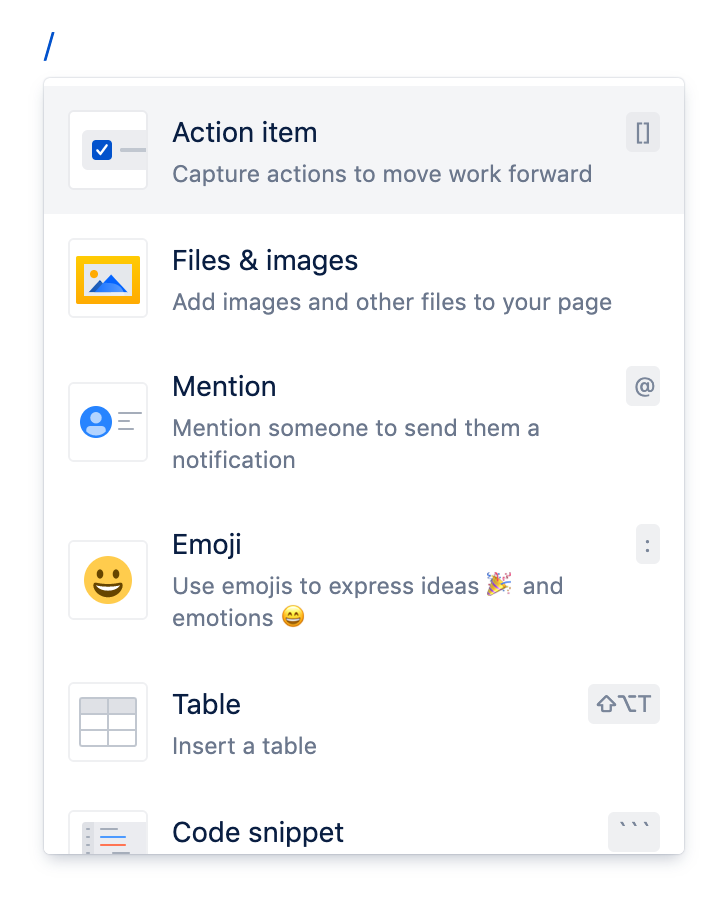
1. / Layouts
Do you ever want content on your Confluence page to appear side by side? Or in three columns? Easy said, easy done with page layouts. Layouts are easy to apply and even easier to change; just switch layouts while editing and your content will adjust on the fly.

2. / Files
Type /files, hit enter, and voila! You’ll have access to all of your media. Add files you recently uploaded across other Atlassian products with a unified media picker. Select files from Google or Dropbox, and even search for the perfect Gif from GIPHY. Who doesn’t love a good gif?!
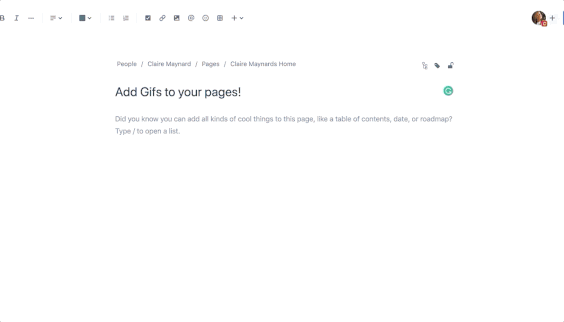
3. / Panels
Panels are a great way to call out important information in your document. Highlight sections of a page with different out-of-the-box color panels for different needs – add info, notes, success, warning, or error panels.

4. / Action items
Got a to-do list for yourself or your team? Assign an action item (or two!) for your team members quickly. Even set due dates by adding a double slash command (//) to pull up the calendar menu.

5. / Link
Type /link and hit enter to see a list of recent pages you’ve worked on in Confluence.
If you paste a link from a third party, you’ll see a rich preview of that link.

6. / Trello boards or cards
After you’ve created a rockstar project plan in Confluence, you can help stakeholders track the work with an embedded Trello board. Once you hit publish, anyone can view the board or move cards around without leaving Confluence.
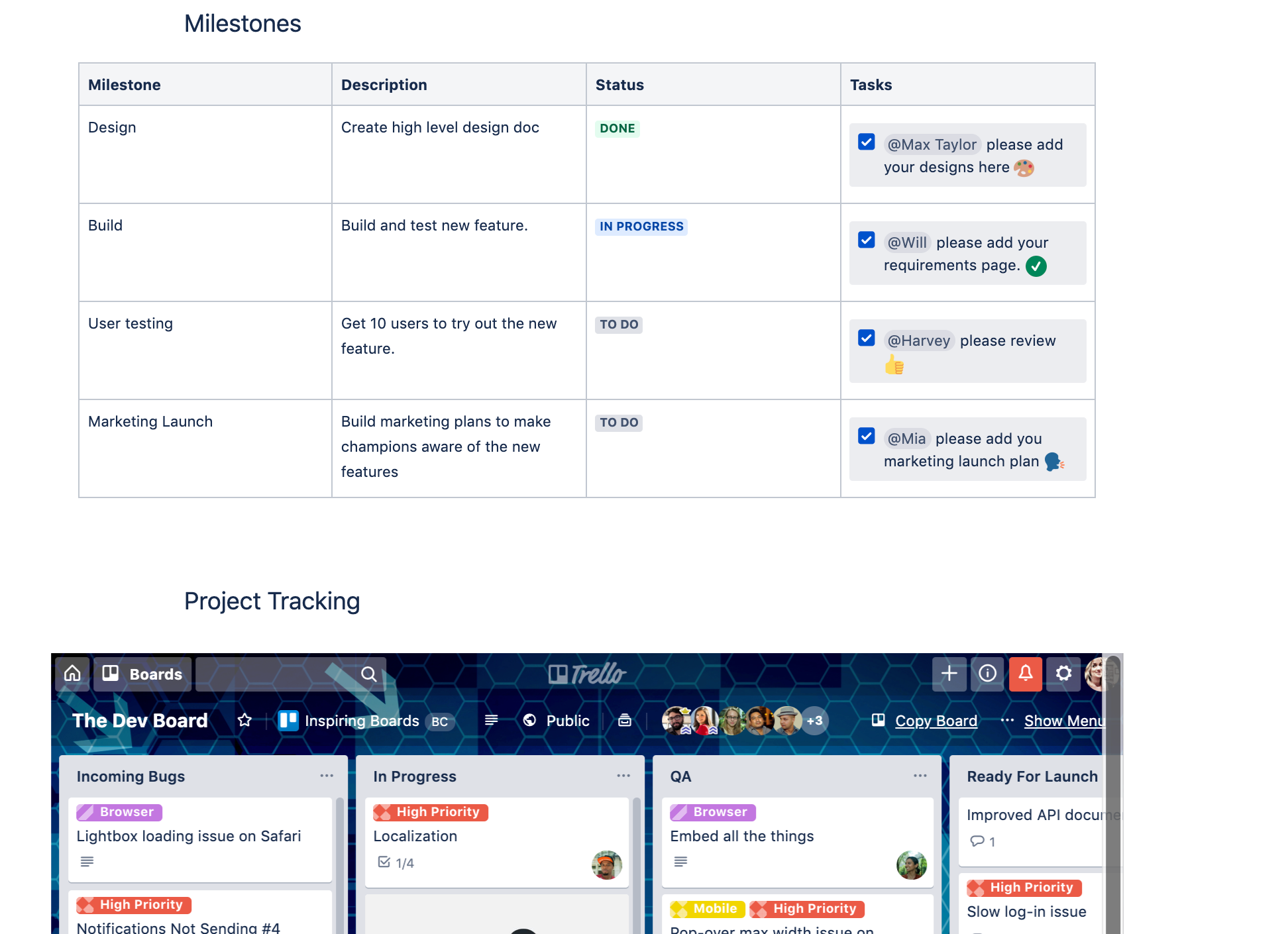
7. / Jira
Working with Jira? Keep everyone in the loop on the status of a project without navigating away from the page. Add a Jira roadmap, a Jira issue, or an entire list of Jira issues from a particular project to a Confluence page and get automatic updates.

8. / Table of contents
Working on a looong page? Give your readers a quick way to jump through your content with a table of contents, which automatically generates a list of anchor links to all the headings and sub-headings on your page.
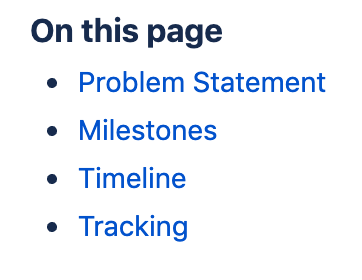
9. / Code blocks
Code blocks are useful for demonstrating programming concepts or managing a library of code snippets for your development team. You can create a block to display code so that it’s broken out from the rest of your content and formatted by language. Confluence supports proper syntax coloring for a number of programming languages.
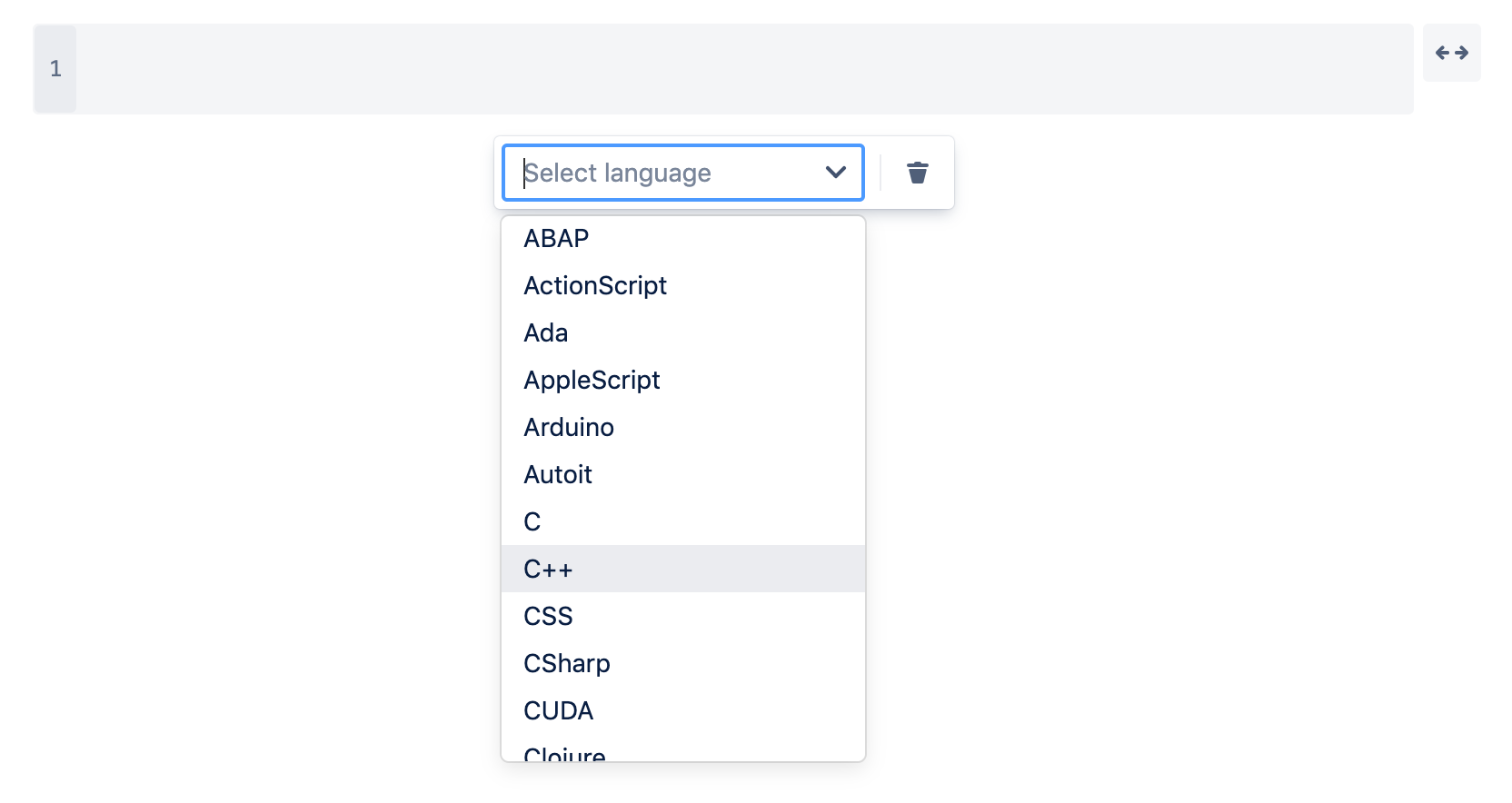
10. / Page properties and / page property report
Page properties and Page properties report work together to show summary information from one page on another page. Let’s say you have a ton of related pages across multiple teams or projects, and you’d like to summarize those pages in an overview page for easy viewing – we often see this feature used to combine all the decisions you’re making about a particular project or product, or all the programs your marketing team is running in each quarter.
To use this feature, add the page property box on all the sub-pages you’d like to summarize. For example, on all of the decision pages, you’d add /page properties and then insert a table with the information you want to summarize, such as Status, Stakeholders, Outcome, Due date, or Owner.
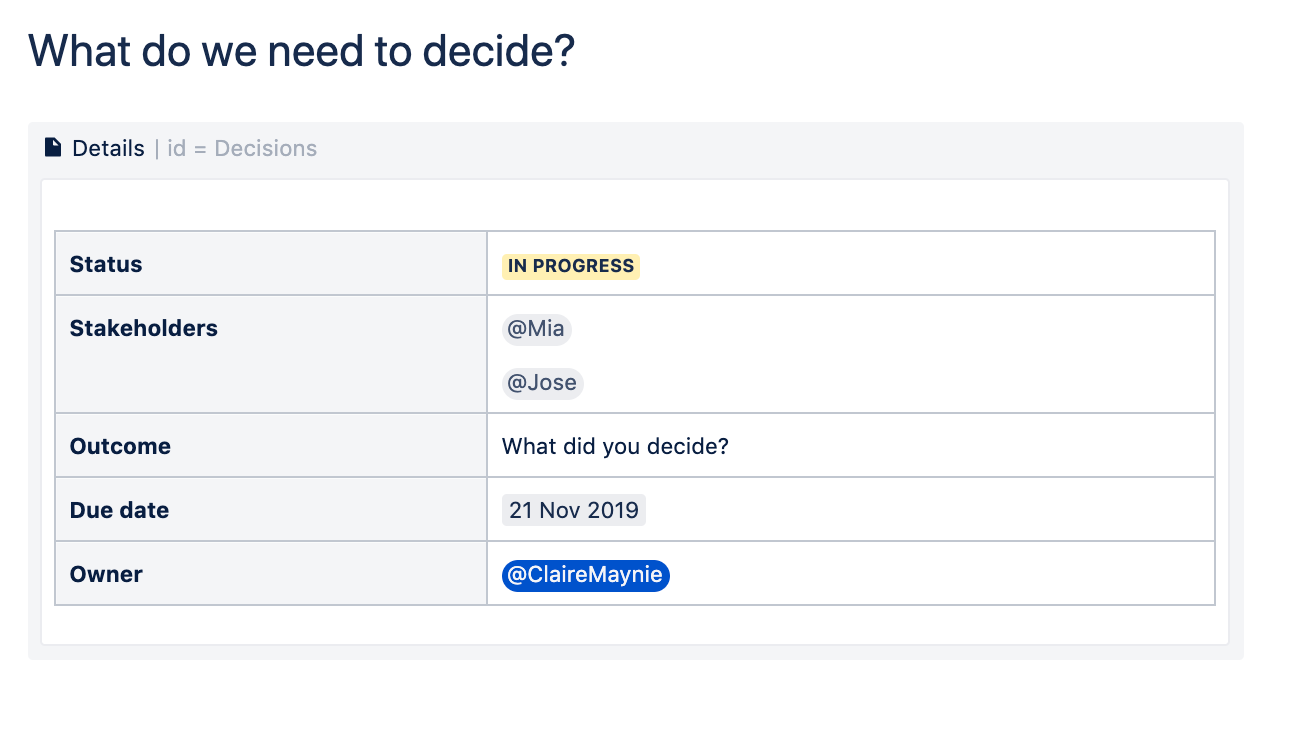
You would use this pattern on all the pages you’d like to summarize. Label each page with a unique label, such as “decisions.”
Then, on the page where you’d like to display the summary, type /page properties report and embed the report. Every page you’ve labeled and added the page properties macro to will display in a summary with the fields you’ve defined. Pretty cool, right?
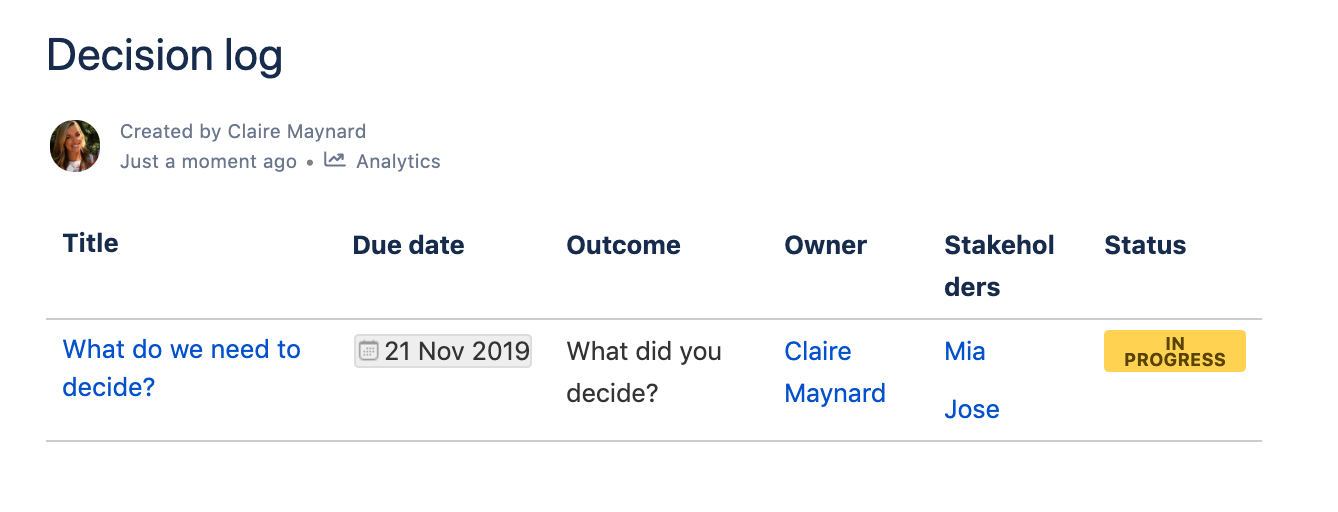
11. / Include page
Let’s say you want to create a page that displays several pages of content that already exist on your site. Use /include page to display an existing page on a different page. This can be useful for pages that need to refer to other information. Instead of having to keep multiple pages up to date, keep one page up to date and refer to that master page from other pages.
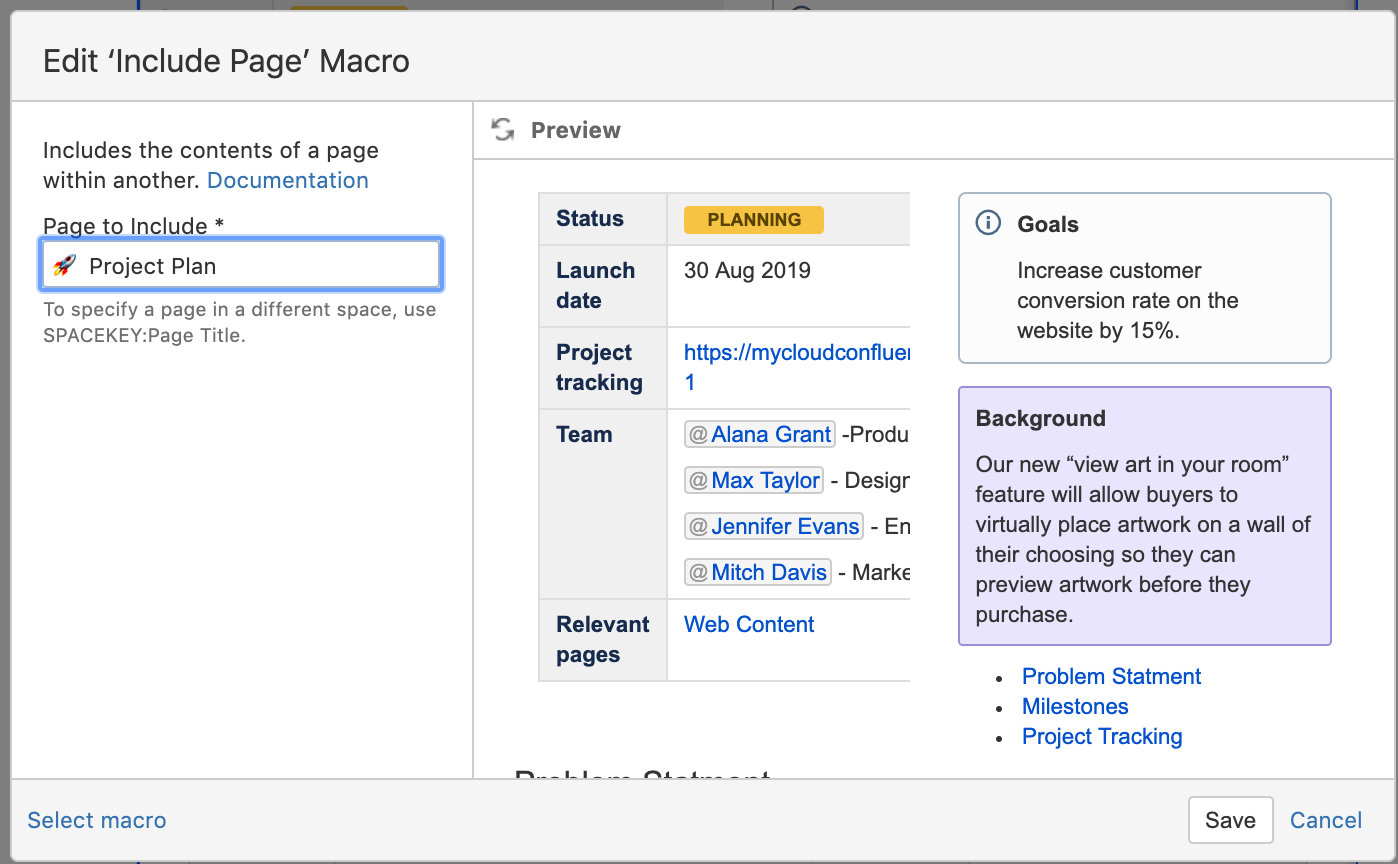
12. / Excerpt and / Excerpt include
If you only want to display part of a page, /excerpt and /excerpt include work together to display “excerpted” (that is, a segment of) content from one page to another page.
Say you want to share goals across several teams who are working across different pages in Confluence. You can go to those pages and add an excerpt around the part of the page you’d like to display. See the example below, where we’ve added an excerpt box around the Marketing Team’s goals. We can do this for the Product Team’s goal page as well.

Then, on your master page, use / excerpt include and add each page’s excerpt by identifying the name of the page it’s on. Below you can see we’re displaying the goals from the Marketing Team page and the Product Team page onto one master goal page.

Whew! Our hope is that you get comfortable with some of the new features and start creating your own rich, beautiful content for your readers. We know they will be impressed :). To find and explore more, try out the slash command and review the short descriptions and give them a go!